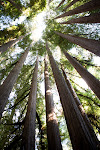 Når det gjelder blad grønnsaker og nytte planter regner stornelse som kongen. Det er ganske rik på vitaminer og har blit brukt som mat, medisin og tekstil for mer enn 1500 år.
Når det gjelder blad grønnsaker og nytte planter regner stornelse som kongen. Det er ganske rik på vitaminer og har blit brukt som mat, medisin og tekstil for mer enn 1500 år.Høsting rundt Oslo
Fra slutten av mars begynner stornesle å dukke opp langst åker og enger på Bygdøy. Men det finnes også på mange andre steder: langst elver, i parker og hager. Det foretrekker nitrogen holding jord- rund stall, og kompost hauger hvor det er rikelig tilgang på gjødsel. Så søk ved siden av gårder hvor de har kuer og hester. Men, husk å ta med hansker. Det er beste å plukke de unge, nye bladene på top som ikke brenner. Men, man må være forsiktig med de store bladene som brenner. Heldigvis forsvinner brennhårene etter et par minutter i kokende vann.

Brenneslesuppe
4 porsjoner3 dl friske grønne blader av brennesle
1 liter kraft eller vann og buljongterninger
1 ss margarin
2 ss hvetemel
 Vask bladene godt og damp dem i litt vann til de faller sammen. Hakk bladene fint. Lag en jevning av smør og mel, spe med kokende væske og la det koke ca 10 minutter før den hakkete brenneslen tilsettes.
Vask bladene godt og damp dem i litt vann til de faller sammen. Hakk bladene fint. Lag en jevning av smør og mel, spe med kokende væske og la det koke ca 10 minutter før den hakkete brenneslen tilsettes.Smaker fortreffelig med brødskiver stekt i smør med gressløk. Veldig rimelig mat. Bruk de nye neslene om våren og forsommer.
Flere oppskrifter

